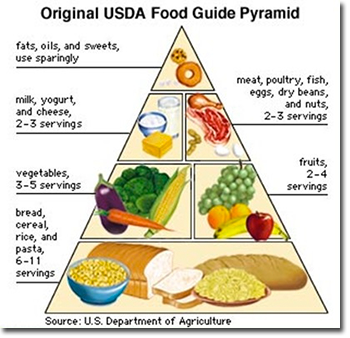One of the most pervasive myths about health and fitness that I personally encountered growing up and later in medical training and practice was that exercise, of all types, was the principle key to attaining a “fit and trim” body composition. To be sure, what one consumed in terms of diet was deemed important, but for example playing high school sports in the mid-70’s, we were taught and trained to be carb-dependent, protein-guzzling machines.
Wait Just a Danged Minute, This Story Doesn’t Add Up
 We experienced, yet didn’t really understand, the simple reality that repetitive, glucose-fueled / glucose-burning workouts trained our bodies to prefer or reach for glucose preferentially 24/7.
We experienced, yet didn’t really understand, the simple reality that repetitive, glucose-fueled / glucose-burning workouts trained our bodies to prefer or reach for glucose preferentially 24/7.
We burned through glucose in the too-long, too-intense HIIT and chronic cardio-focused training that dominated the day, gorged on carbs and too much protein (leading to gluconeogenesis when glycogen stores refilled quickly) afterward, generating spikes of insulin, with a resultant ‘sugar crash’ leading to even stronger carb cravings.
Some of my very athletic compadres began in high school to pack on a few extra pounds around the middle, a body composition change that became even more prevalent on through college and graduate school years.
Yet the conventional wisdom taught back then (and even in some circles now) was based on the calories-in / calories-out model, and could be ‘fixed’ by simply reducing your total calories per day, usually by restricting fats, and continuing to fuel with carbs as we implored ourselves and patients to just ‘work those calories off in the gym or on the road’.
Yet over the past three decades we (as a Nation) have seen fitness levels plummet as we dutifully pursued the Food Pyramid and chased the current fad diets across the fruited plain, and pounded hours away in the gym hoping to return to the bodies and fitness of our youth.
Body Composition and Exercise: So How Much Does Exercise Truly Matter?
Ironically, looking back on more than twenty-five years in the study and practice of medicine (rehabilitative and musculoskeletally focused), I don’t remember reading or hearing detailed discussion of what we know today to truly drive body composition. Lip service was paid to obtaining “nutritional balance, eating well, and getting lots of exercise”, though nutritional recommendations were seeming directed more by USDA policy than by evidence-based science back in the day.
Sure, medical investigators have long acknowledged that exercise plays a role in body weight and composition (here’s a decent example from the Journal of Obesity back in 2011), though multiple agencies, for example including the American Heart Association, still cling to out-dated and frankly harmful dietary recommendations (see the nitty gritty details here; we’ll have a detailed discussion about these at a later date) and chronic cardio inducing exercise recommendations.
The encouraging reality is this: what you eat will determine 80% of your body composition, with exercise contributing roughly 10%. The other 10% is likely composed of your skills in managing stress (and life can be damned stressful these days) and resting well (sleep matters).
These are of course rough divisions, and will vary in their relative contribution somewhat among individuals pending details such as how far above their ideal body weight they might be, how metabolically impaired they are, how long they’ve been metabolically impaired, if they suffer from other medical issues (comorbidities), how they manage stress, and how they manage sleep – which most of us these day do quite poorly.
Exercise – particularly the right types and in appropriate volumes – is a critical, absolutely necessary, and often fun part of the equation, but what you eat is far, far more important to your overall health, wellness, function, and body composition.
As we progress through our Foundation Series we’ll be digging into each of these areas in much greater detail.



Leave a Reply